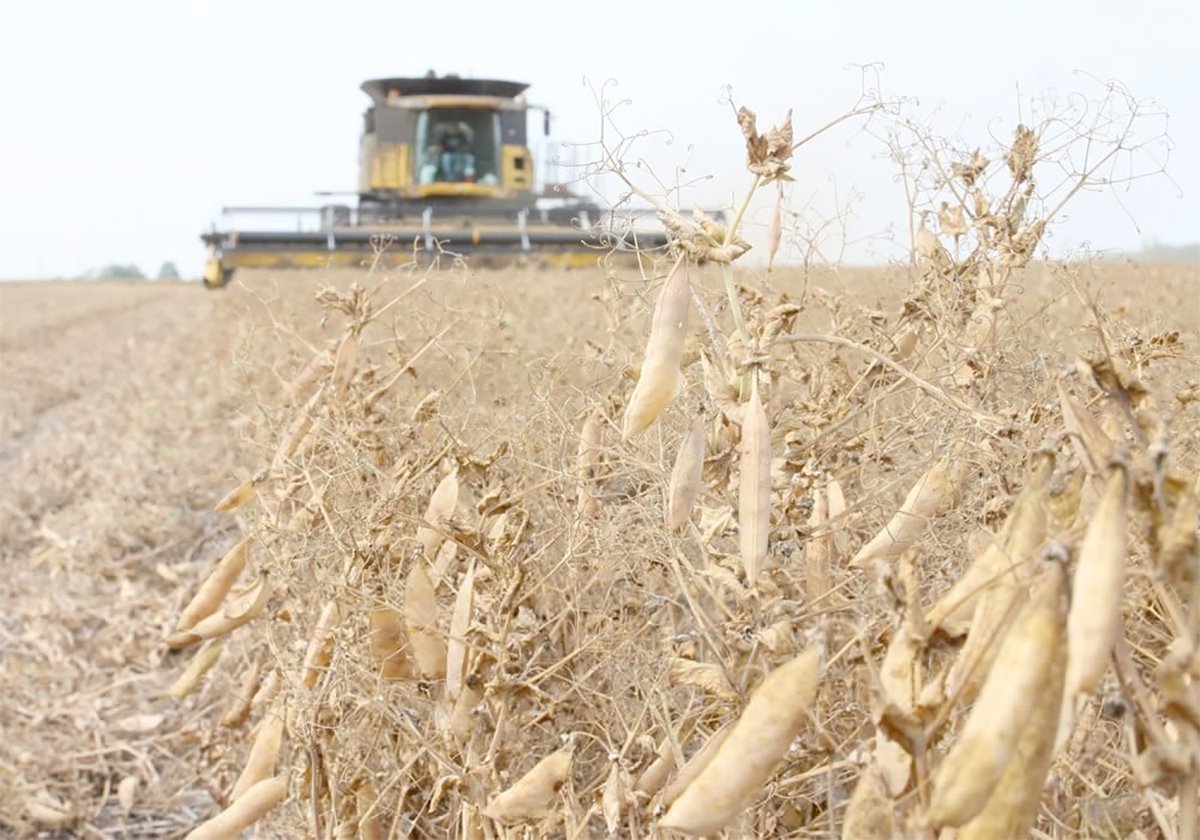Two new studies, published late March in the journal Science, indicate low doses of insecticides interfere with bees’ sense of direction and the insect’s ability to reproduce.
In two separate experiments, researchers in Britain and France studied the interaction between bees and neonicotinoid pesticides, one of the most popular insecticides in the world, used on cereals, fruits, vegetables, legumes, oilseeds and other crops.
Almost all canola and soybean seed used in Western Canada are treated with neonicotinoid but it is not clear how much residue remains in the plant. On vegetable and other plants, the insecticide is sprayed on leaves.
Read Also

Chinese, Indian tariffs take toll on pea prices
The disruption of pea exports from Canada’s largest customers will likely result in slow pea exports for the remainder of the crop year.
“Treated colonies had a significantly reduced growth rate and suffered an 85 percent reduction in production of new queens compared to control colonies,” the researchers noted in the Science paper.
“Given the scale of use of neonicotinoids, we suggest that they may be having a considerable negative impact on wild bumblebee populations across the developed world.”
The two studies provide fuel for environmental groups and beekeepers in the United States, who are calling on the federal government to ban neonicotinoids.
In March, beekeepers and environmentalists filed a petition, with 1.25 million signatures, asking the U.S. Environmental Protection Agency to ban clothianidin. They claim the body of scientific evidence proves the insecticide is harmful to bees.
Jeff Pettis, lead bee researcher for the U.S. Department of Agriculture, said there must be a balance between bee safety and efficient crop production.
“You’ll hear a fairly strong cry that we’ve got to ban these things,” he said. “It’s happened it several countries, more so in Europe. But I don’t think that’s the answer.”
One solution might be limiting the use of neonicotinoids on crops that are attractive to bees, Pettis said.
Of the two studies, Pettis said the results of the French experiment aren’t unique. Other studies have demonstrated that pesticides negatively affect bees’ homing abilities.
But the British study is noteworthy, he said.
“The bumblebee study was quite significant in that I think they used fairly realistic field doses,” Pettis said.
“Those bumblebee colonies, at the end of the season, couldn’t produce new reproductives for the next phase of queens, in particular, for the next season. That was pretty striking. If you had that happen one or two seasons in a row … you’d have a massive decline in the bumblebee population.”
Bayer Crop Science, which manufactures imidacloprid and other neonicotinoids, said the British ex-periment was flawed because the doses in the lab were higher than bees’ exposure to pesticides in the real world.
But that criticism is flawed, Pettis said.
“Bayer said those doses were high. I don’t think they were.”
From a broader perspective, insecticides aren’t solely responsible for an increase in bee mortality around the globe, Pettis added. Other factors, like varroa mites and viruses, are also killing bees.
“There’s more direct evidence that pesticides are having an effect. It’s playing more of a role,” he said. “Do I think it is the dominant factor in all of pollinator decline? Probably not, but it’s a contributor.”
In one study, scientists with the French National Institute for Agricultural Research attached minuscule microchips to honeybees to monitor the bees’ movement.
The scientists dosed one group of bees with thiamethoxam, a neonicotinoid insecticide, before releasing the bees and tracking their flight. Bees exposed to the pesticide were two to three times more likely to die away from the hive, compared to a control group.
The chemical may have interfered with the bees’ homing system, the researchers said, preventing the insects from locating their hive.
In the British study, led by entomologists at the University of Stirling in Scotland, researchers treated colonies of bumblebees with imidacloprid, a neonicotinoid registered for use on more than 140 crops in 120 countries.
After the bees were exposed to the neonicotinoid in the lab, the bumblebees were released to fly around and collect pollen for six weeks.















